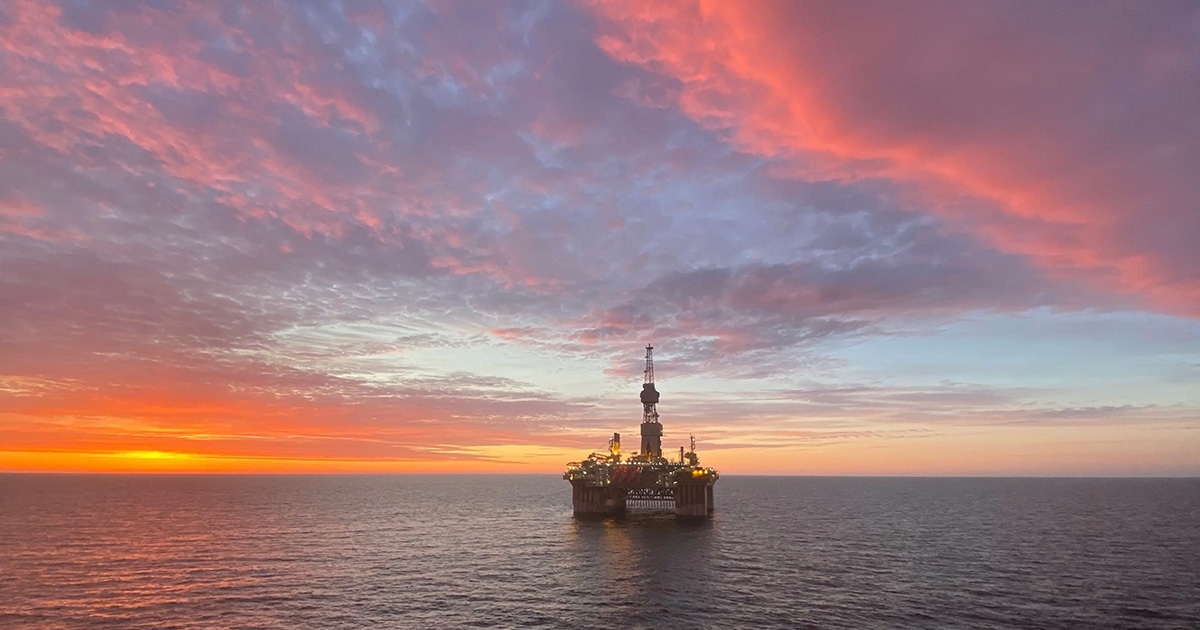Njord Field Cutting 13 000 Tonnes of CO2 Emissions per Year from 2027

Based on a collaboration project with OKEA, Njord A will be electrified to cut greenhouse gas emissions from production.
Equinor has, on behalf of the Njord license partners, submitted a revised plan for development and operation (PDO) to the Ministry of Petroleum and Industry.
“Njord A and the Njord Bravo floating storage and offloading (FSO) vessel returned to the field this autumn after extensive upgrading and will soon be ready for 20 more years of production and value creation. We are now continuing the modernization of Njord by converting to electric operation. This will cut emissions from production and reduce Norwegian CO2 emissions by more than 130 000 tonnes per year from 2027,” says Trond Bokn, Equinor’s senior vice president for project development.
 Trond Bokn, Equinor's senior vice president for project development
Trond Bokn, Equinor's senior vice president for project development
Electrification of Njord will also benefit the Hyme, Bauge and Fenja tie-back fields. These fields help finance the project.
As operator of Draugen, OKEA will be responsible for developing the power infrastructure from shore to Draugen. Equinor will be responsible for the cable from Draugen to Njord as well as modifications and upgrading on Njord A, where the two existing gas turbines for main power production will be replaced by electric power from shore via Draugen. Based on this, around 60 per cent of the power needed by Njord A will be covered by electricity, and the Njord Bravo FSO will be fully electrified.
In total, the electrification of Draugen and Njord will cut 330 000 tonnes of CO2emissions per year.
The fields will have a total power demand of up to 80 MW per year and will be connected to the power grid at a transformer station at Straum in Åfjord municipality. Operated by Tension, the transformer station has a capacity of 200 MW, and the project does not require a grid upgrading.
The investment estimate for the whole project is around NOK 7.3 billion, of which a good NOK 3 billion covers the share of the Njord license. The revised plans for development and operation (PDO) and for installation and operation (PIO) must be approved by the Ministry of Petroleum and Energy.
Start-up is expected in the first quarter of 2027.
Facts about Njord
- Njord is located in the Norwegian Sea, 30 kilometers west of Draugen, and 130 kilometers northwest of Kristiansund in 330 meters of water.
- Discovered in 1986, the plan for development and operation of Njord was approved in 1995. The field came on stream on 30 September 1997.
- The field development concept includes a floating steel platform, Njord A, featuring an integrated deck with drilling and processing facilities and living quarters.
- Produced oil is transported by pipeline to the Njord Bravo floating storage and offloading vessel (FSO), and from there by tankers to the market.
- Gas from the field is exported through a 40-kilometer pipeline connected to the Åsgard transport system (ÅTS), and from there to the Kårstø terminal.
- In the period 2016 to 2022 the platform and FSO were upgraded and prepared for operation until 2040. Plans call for the field to resume production in December.
- The Hyme field is tied back to Njord. As part of the completed project, the platform was also prepared for tie-back of the Bauge and Fenja fields.
- License holders for Njord are Wintershall Dea Norge AS (50 percent), Equinor Energy AS (27,5 percent, operatør) and Neptune Energy Norge AS (22,5 percent).

